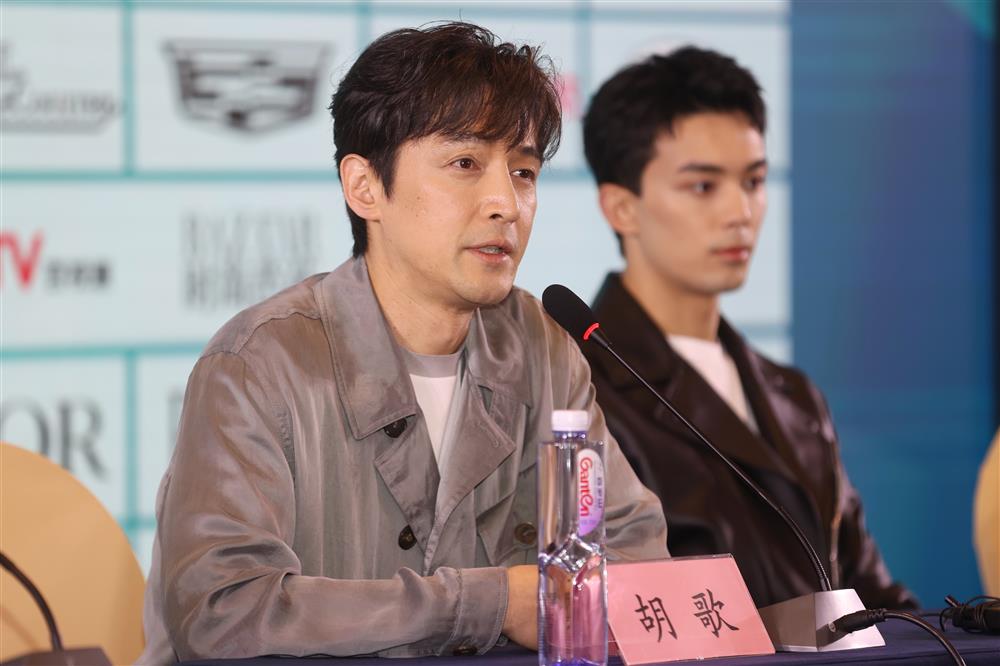To achieve a new transformation in a discipline, he led a group of young people to spend ten years completing this task
A dictionary is a footnote to an era, and a dictionary of an era is sufficient to reflect the level of knowledge system in that era. The long history of dictionaries in Chinese culture can be traced back to Erya, Shuowen Jiezi, and Huanglan. But we often revere such "big books" and dare not pick them up for daily reading.
This "Dictionary of Fine Arts" condenses profound and profound knowledge, making it light and lively to read. It can even be regarded as a leisurely book on art history to be read on the desk. However, weaving boats and crossing the sea in the ocean of knowledge is a lonely career. Mr. Xu Jianrong spent 10 years compiling this book, showcasing the academic perspective influenced by the global knowledge system and the concept of "great art". Today, he is still tirelessly pondering and writing notes at any time, in preparation for checking and filling in any gaps when revising this book, and achieving perfection
"Dictionary of Fine Arts" edited by Xu Jianrong, published by Shanghai Dictionary Publishing House
The dictionary "proofreading is like sweeping leaves" not only provides readers with knowledge or facts themselves, but more importantly, its positioning and significance in specific logic. Different logics lead to different writing methods for interpreting entries
Shangshu: The "Dictionary of Fine Arts" is not only not obscure and difficult to understand, but also very beautiful. Among 3600 vivid words, you can find various styles of art, characters from different periods, various schools of painting both domestically and internationally, sculptures, and works of art that have a lasting history. In your opinion, what is the most unique feature of this book?
Xu Jianrong: I am glad that young people like this book.
Art is an independent humanities discipline today, and it has been a conscious construction and development in China for nearly 100 years. In China, the compilation of "art dictionaries" has always lagged behind art practice. Although over the past few decades, various art dictionaries have been compiled and published, including the art entries in "Cihai", the art volumes in "Encyclopedia of China", and various "art dictionaries", I still feel that there are two major regrets: first, there are more Chinese art entries than foreign art entries; The second is to focus on art entries in categories such as painting, calligraphy, and sculpture, while neglecting art entries in categories such as craftsmanship, design, architecture, photography, collection, writing, and art institutions. Undoubtedly, this does not meet the needs of readers to have a comprehensive understanding and retrieval of language in the field of art.
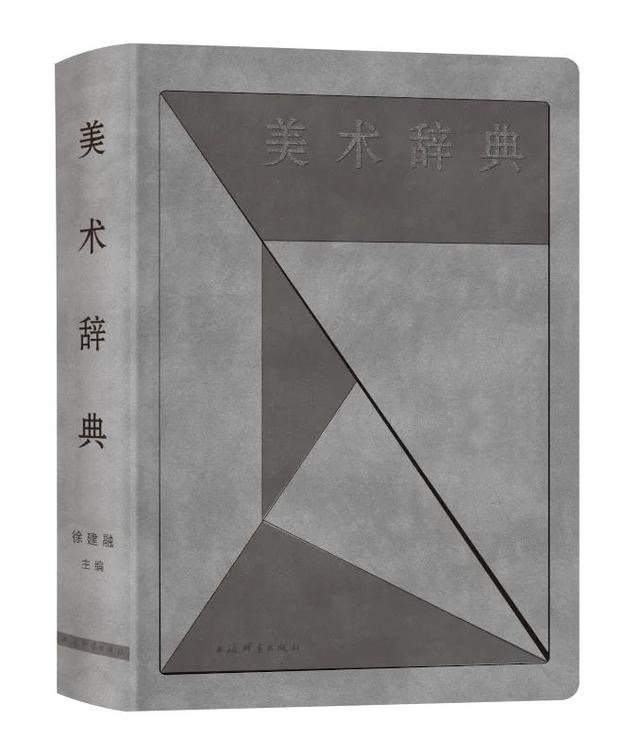
On the basis of compiling "The Great Dictionary of Fine Arts", I will try my best to make up for the regrets. 45 years ago, I participated in the compilation of an art dictionary by a group of senior scholars from the Shanghai Chinese Academy of Painting. Later, based on the compilation system established by Mr. Chao Feng from Shanghai Dictionary Publishing House, I developed my own ideas and methods for compiling dictionaries. After constantly writing notes and conducting extensive investigations, I read through the latest art dictionaries from both domestic and foreign sources, deleted more than 1500 entries from "The Great Dictionary of Fine Arts" and added more than 400 entries, forming this "Art Dictionary". I think its biggest feature is that it is more streamlined while also being more comprehensive.
Going to the study: "Simplification" points to "less", "comprehensiveness" points to "more", can we have both?
Xu Jianrong: You can have both. The compilation of dictionaries is a unit of knowledge, and it inevitably faces a contradiction between concentration and dispersion in expression. Because a single item does not contain all the relevant information, it always relies on the ordered arrangement between other items to form specific logic. The dictionary not only provides readers with knowledge or facts themselves, but more importantly, its positioning and significance in specific logic. Different logics lead to different ways of writing article interpretations. These all demonstrate whether the knowledge system and disciplinary perspective of the dictionary are consistent, whether it has internal unity, and also determine the effectiveness of dictionary entries in inspection and utilization. The "more concise and comprehensive" approach in the "Dictionary of Fine Arts" focuses on the effectiveness of historical and contemporary "existence is reasonable" entries from the perspective of "great art".
Xu Jianrong shares his experience in art history research and dictionary compilation with readers during the event
Shangshu Fang: I have a deep understanding of what you have said when reading the "Dictionary of Fine Arts". For example, just looking at the entry "Herm è s", which is just over 100 words, explains the brand's artistic characteristics. However, only by looking at this entry within the entire dictionary system can we clearly position its position in the field of modern arts and crafts and artistic design.
Xu Jianrong: Previously, domestic art dictionaries did not include entries such as "Cartier," "Herm è s," and "Versace.". A simple reason may be that domestic compilers know very little about these foreign brands. This is also a common problem in the compilation of dictionaries. Europeans tend to write more about Europe and America, but less about Asia; Chinese people write, of course, there is more content in China and less content in foreign countries. Both domestic and foreign art dictionaries focus on painting and sculpture, which means there are more mainstream categories of art, while there are fewer branches such as craftsmanship and design. The simplification I want to achieve is based on the perspective of "big art", which is to delete as much as possible those that have clear meanings or are not important and have a low detection rate in the field of art. For categories that are rarely mentioned in other dictionaries, I try to obtain knowledge through investigation as much as possible and then include them.
Study Room: How to understand the "big art" perspective you just mentioned?

Xu Jianrong: Let's first talk about "art". The establishment and development of "art" as an independent humanities discipline was synchronized with the ideological enlightenment of the transition from the late Qing Dynasty to the early Republic of China towards modernity; The concept of "great art" was proposed in sync with China's reform and opening up. It refers to the art forms and activities that permeate all fields of social life, breaking the boundary between practical art categories such as arts and crafts, architecture, and art design and traditional pure art. It also covers modern art categories such as image art, installation art, and performance art. This concept is reflected to varying degrees in various art dictionaries both domestically and internationally, but it is often overlooked and often overlooked.
Shangshu Fang: The book places special emphasis on reflecting the exchange and mutual influence of Chinese and foreign art, which is probably a consideration from the perspective of "great art", right?
Xu Jianrong: You can say so. For example, the Chinese painting section has always been a traditional strength in domestic art dictionaries, so I added the vocabulary of foreign painting, including terminology related to the types, techniques, and styles of foreign painting, as well as Chinese American painters who have successfully established themselves in foreign painting circles, Japanese painters influenced by Chinese Song and Yuan ink painting, Ming and Qing literati painting, and so on. For example, in terms of calligraphy and seal carving, China naturally has an absolute advantage, but other countries within the Chinese character cultural circle also have famous calligraphers and works that have been passed down, such as Matsuhito Akechi, one of the three famous early Edo calligraphers listed in the "Kan'ei Sanbi". Such examples are countless in the Dictionary of Fine Arts.
Going to the study: No wonder the ancients said, "School books are like sweeping fallen leaves, spinning and sweeping.".
Xu Jianrong: The compilation of dictionaries is always a job that cannot be completed once and for all, but it is definitely a job where the latter wins the former. I hope that so far, this is the most complete art dictionary. I still maintain the habit of paying attention to the dynamics of the art world and society, and writing notes at any time, in case there is a need to fill in any gaps and strive for excellence in the revision of the Art Dictionary.
Going to the study: No matter how difficult it is, it must be done this way?
Xu Jianrong: Yes, this must be done. Because any discipline has reached a certain stage of development, it inevitably requires the combination of academic history and specialized reference books, and appropriate sorting and summary from both vertical and horizontal perspectives. The mutual nourishment and learning from each other between the study of art history and the compilation of art dictionaries is a traditional academic tradition that has been passed down from generation to generation. The process of research is also a process of learning, as well as the process of cultivating a generation of Chinese art historians.
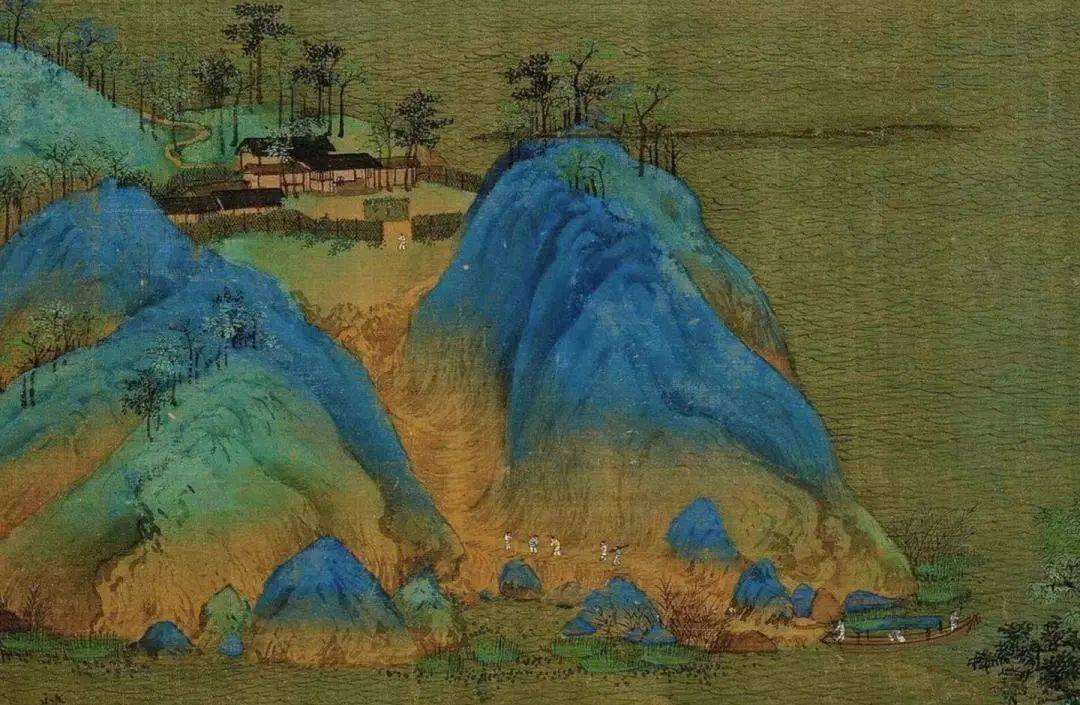
Turning to the "Jin, Tang, Song, and Yuan Dynasties" is the excellent traditional classic gene of Chinese calligraphy and painting, which should not only be placed in museums, but also be preserved in the blood, soul, and artistic innovation of the descendants of China
Going to the study: We are also very interested in your artistic path. Would you like to study calligraphy and painting first or conduct theoretical research on art?
Xu Jianrong: I studied painting in my early years and devoted myself to academic research in my middle age. At that time, I used Jiang Hanting's small freehand brushwork of flowers and birds to build the foundation, tracing back to Huayan, Shitao, Badashan people, "Qingteng Baiyang", etc., using Qing Dynasty freehand brushwork as a method, and trying a fresh, bold, and open style of painting; Later, I studied figure painting under the guidance of Mr. Yao Youxin and realized what Lu Ji said: "To preserve form, one should not be good at painting." It is necessary to take "using form to depict spirit" as the "fundamental method of painting," and on this basis, elevate it to "vivid and vivid atmosphere.".
Starting from the 1980s, I studied under Mr. Xie Zhiliu and Mr. Chen Peiqiu, as well as under Mr. Wang Bomin and Mr. Wang Chaowen, from a historical perspective, to delve into the excellent traditional classics of painting in the Jin, Tang, Song, and Yuan dynasties. I then discovered that the painting traditions of the Ming and Qing dynasties were only a variation in the inheritance of the Jin, Tang, Song, and Yuan traditions. Their academic level and artistic value cannot replace the Tang and Song classics, and their artistic level cannot be compared to them. Therefore, I shifted my focus and brush to the traditions of Jin, Tang, Song, and Yuan.
Xu Jianrong's family takes a photo with Xie Zhiliu and Chen Peiqiu's wife
Shangshu Fang: In the 1980s, the mainstream of Chinese painting was to prioritize the Ming and Qing dynasties over the Tang and Song dynasties. However, did you go against this trend and encounter any resistance at that time?
Xu Jianrong: The Jin and Tang dynasties were the pinnacle of Chinese calligraphy, while the Tang and Song dynasties were the glorious periods of Chinese painting. The calligraphy of the Song dynasty, like the painting of the Yuan dynasty, was in a period of change and transformation. Therefore, the historical span of Jin, Tang, Song, and Yuan is a classic period of Chinese calligraphy and painting tradition. But after this classic self proclaimed and elegant style of literati freehand painting, it gradually became forgotten and ignored by people, and even distorted. At that time, literati regarded traditional painting as a backward art of craftsmanship, while freehand brushwork was an advanced art of elegant expression.

Over the past 40 years, my main focus has been on advocating for the study, inheritance, and promotion of painting classics from the Jin, Tang, Song, and Yuan dynasties. That is the excellent traditional classic gene of Chinese calligraphy and painting, which should not only be placed in museums, but also be preserved in the bloodline, soul, and artistic innovation of the descendants of China. Abandoning the pond and rushing towards the river and sea, abandoning the branches and seeking the source, I bring this insight to combine academic research with painting creation.
I have written many articles criticizing freehand painting, directly expressing the viewpoint that "realistic painting in the Tang and Song dynasties is the authentic path of Chinese painting tradition and should be widely inherited and promoted.". I think that compared to the freehand brushwork of the Ming and Qing dynasties, it was just a side track. My viewpoint was met with strong resistance and relentless criticism at the time. But after entering the 21st century, this viewpoint has gradually been accepted by people. Today, there is a recognition that "except for Tang and Song paintings, it is not Chinese painting", just like in the past, "except for Ming and Qing paintings, it is not Chinese painting". I think this proves that although we have gained an understanding of Tang and Song painting, this understanding is still one-sided and not profound.
Study Room: Mr. Chen Peiqiu once praised you as "the most powerful advocate of traditional Chinese painting in the Tang and Song dynasties in the past decade. Xu Jianrong's research on painting history and theory is not for the sake of research, but for exploring the direction of calligraphy and painting practice..." These are the influences of your mentors on you, right?
Xu Jianrong: I was able to achieve some results because of the influence of my mentors. If I didn't learn from Mr. Xie Zhiliu and Mr. Chen Peiqiu, there wouldn't be my call for Tang and Song traditions; If it weren't for following Mr. Sun Zubai, Shao Luoyang, Wu Lifu, and others, there wouldn't have been a compilation of the "Dictionary of Fine Arts"; Without studying under Mr. Wang Bomin and Mr. Wang Chaowen, there would be no research in the field of art history theory.
Group photo of Xu Jianrong and Wang Bomin
Going to the study: Such a teacher is hard to come by.
Xu Jianrong: Yes. Teachers like Wang Chaowen and Xie Zhiliu are rare among young people nowadays, but their superior learning conditions far surpass ours. In the process of their artistic growth, they can see various styles and schools of famous masters and relics from ancient and modern times, both at home and abroad. Whether visiting museums to observe original works or purchasing first-class printed materials, the superior learning conditions far surpass those of our generation.
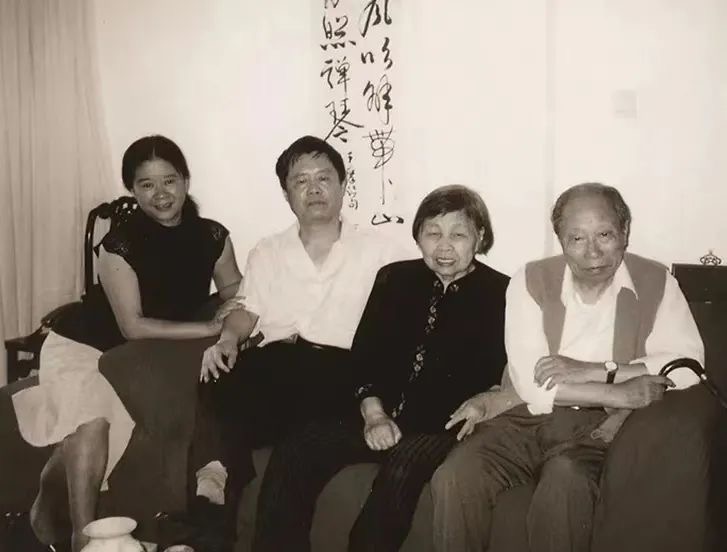
Shangshu: You have an interesting theory about "dating" contemporary calligraphers and painters.
Xu Jianrong: I divided the calligraphers and painters of the 20th century, including all cultural figures, into three generations, mainly focusing on the education they received between the ages of 15 and 20.
The first generation was born before 1930, the second generation was born between 1940 and 1960, and the third generation was born after 1970. Those born between 1930 and 1940 can enter either the first or second generation, while those born between 1960 and 1970 can enter either the second or third generation.
The first generation had good learning conditions, mainly referring to reading. They had no restricted areas for reading, were well-rounded and inclusive, and then bravely advanced in the direction that best suited them. Therefore, many masters emerged, such as Huang Binhong, Qi Baishi, Zhang Daqian, Pan Tianshou, Li Keran, etc; The second generation is my generation. Although the conditions for studying are not good, I can receive guidance from many good teachers. In the 1970s and 1980s, the most outstanding traditional calligraphers and painters in China were concentrated in Shanghai, and I was able to visit and pay respects to them one by one. Of course, later on, I also sought advice from many predecessors of calligraphers and painters from other places; The third generation that I just mentioned, their learning conditions are far superior to their predecessors, to the extent that many painters achieved remarkable results in their early thirties. This makes me reflect on the deep-rooted belief in the late maturity of Chinese painting, as well as the fact that Huang Quan, Wang Ximeng, and others from the Northern Song Dynasty created immortal classics in the history of painting before the age of 20, including the first generation of masters Xie Zhiliu, Cheng Shifa, and others who were also famous for their paintings around the age of 30.
Unfortunately, the third generation almost never truly became popular until later. Where is the problem? Perhaps after achieving success and fame, they no longer pay attention to learning. So, I can only hope again on today's young people. Many young people today are dedicated to Tang and Song poetry, and there are many who can write excellent poetry. This is a regret for our generation, and I am very pleased about it. But if we think that obtaining the true essence of tradition is not only insufficient, but also misleading. "Each generation has its own literature," said Wang Guowei. In fact, many people in the Yuan and Ming dynasties also said the same thing; And "The Six Classics are not books of one lifetime, and they will exist without the ultimate connection with heaven and earth." This is what Ouyang Xiu said, and he also believed that poetry, literature, and literature were "under the tutelage of Confucius", "not enough to rely on" and "all are pitiful.". Calligraphy and painting are also a principle, so I would like to give a suggestion to young people who aspire to tradition. Art changes with the times, but classics and history remain unchanged. Inheriting and learning from tradition, poetry is of course necessary, but classics and history are fundamental.
Mr. Wang Chaowen and Xu Jianrong and others take a group photo
"Good reading, not seeking deep understanding" is a vast sea of books, with three reading methods: first, extensive knowledge and strong memorization; second, in-depth research; and third, not seeking deep understanding
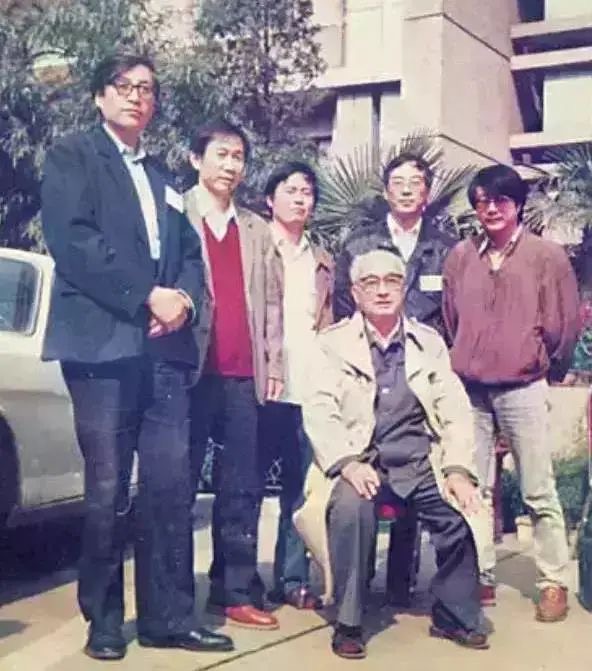
Shangshu Fang: You have published over 150 works and left behind academic monographs worth millions of words. You once emphasized that this first benefits from reading more books. How do you view reading?
Xu Jianrong: My positioning of my identity is first and foremost that I am a "scholar". Whether it is farming or teaching, I am "good at reading and do not seek deep understanding". Mr. Lu Yanshao once said that he arranges his time for "four parts reading, three parts writing, and three parts drawing", and puts reading absolutely first. Qigong, Xie Zhiliu, Xu Bangda, Cheng Shifa, and other predecessors were not only calligraphers and painters, but also intellectuals and connoisseurs. It can be seen that the predecessors in the art world emphasized the importance of reading, saying that building a broad foundation and learning is the art.
In addition to practical significance, reading also lies in the transformation of "useless" temperament and the cultivation of character and spirit. As the saying goes, "there is poetic and scholarly energy in the abdomen, but this" dazzling temperament "cannot be expressed normally. It can only be expressed during" major festivals ", but" ordinary "often exists, and" major festivals "do not. So people who truly have poetry and books in their stomachs are almost indistinguishable from ordinary people who do not read or read less. If he also shows extraordinary talent in his daily life, it indicates that his book has not been truly read and understood. A true reader is someone who reads themselves into books, but they cannot see books from them.
Study Room: How do you read?
Xu Jianrong: Before going to school, it was my early period of reading pictures. In that era, there was nothing to read or read, only various pictures on cigarette shells, as well as comic books called "Little People's Books"; By the fifth or sixth grade of elementary school, my knowledge base continued to expand and my thirst for knowledge grew stronger. I started reading and copying books every day because it was difficult to buy good books. I copied books such as the Kangxi Dictionary, Ancient Chinese Literature Observation, Three Hundred Tang Poems, and Selected Works of Zhaoming Literature. Although I didn't understand anything, I gained a lot and laid a foundation for extensive knowledge and strong memorization, as well as calligraphy.
Later on, the method of reading gradually shifted from copying books to taking notes, repeatedly reading classics such as ancient and modern Chinese and foreign literature, history and philosophy, poetry, calligraphy and painting that could be borrowed, as well as those that could be purchased, such as "Liu Yuxi", "Xin Qiji", and "Ma Enlie", using the method of taking notes. After 1978, a large number of famous works from ancient and modern times, both domestic and foreign, were published. When I saw new books that I liked, I bought them one by one and moved them home in bundles. It's like a starving man seeing a table full of delicious food and wanting to eat anything. Until 1989, my family was filled with books, so I began to selectively buy books and read them in a scanning style. The speed was very fast, and I didn't read every word, but read ten lines at a time, one page at a time. Later, I entered the era of reading pictures again, specializing in reading large picture albums. I have read books such as "Three Hundred Famous Paintings of the Forbidden City" and "The Essence of Song Paintings". With the improvement of publishing and printing level in mainland China, many exquisite and luxurious picture albums have been bought by me to browse anytime.
Going to the study: What is the difference between reading when young and reading when old?

Xu Jianrong: Before the age of 30, reading is aimless. When reading books, one gradually begins to like tradition. When reading traditional books, one gradually feels a lack of understanding of the West and consciously borrows some classic Western works. After the age of 30, I devoted myself to studying art history and began reading purposefully. In addition to traditional calligraphy and painting literature, I also read Western aesthetic classics. Starting to write books after the age of 40, in order to read more clearly. After the age of 60, I aimlessly read books to pass the time, mainly reading the Four Books, Five Classics, and Twenty Four Histories, and taking reading notes from beginning to end. I write them on paper in small regular script with a brush. During the epidemic, I read "The Three Biographies of Spring and Autumn" for about the fifth time and wrote notes on it using a picture page depicting Peking Opera characters, which resulted in over 300 frames.
Going to the study: Everyone has different reading methods for art or learning, which one is better or worse?
Xu Jianrong: The sea of books is vast, and there are three ways to read, such as entering the "egg warehouse". One is to have extensive knowledge and strong memory, such as the shape, size, color difference, and weight of each egg. It can store up to 100 pieces of information in the chest per year, but only one piece is not eaten. People are amazed by their knowledge, which is knowledge. The second is in-depth research, which can verify which hen laid each egg, their bloodline, genes, and nutritional composition one by one. It can complete research on 10 eggs per year without consuming one. People are amazed by their knowledge, which is academic. The third is to not seek a deep understanding, but to observe the general idea and use it for my own benefit. If you see an egg, discard it if it's bad, and eat it if it's good. However, its shape, color, weight, genes, and nutrition are not strictly studied. You can eat 600 eggs in your stomach every year. No one is surprised by their knowledge, but in reality, this is also learning and nurturing.
Using martial arts as a metaphor for knowledge, Wang Yuyan and Zhao Min are knowledge oriented, the Quanzhen Seven Sons who practice in seclusion are academic oriented, and Guo Jing, Yang Guo, and Zhang Wuji are academic oriented. Each has its own advantages and disadvantages.
Works of Xu Jianrong
Teaching young people to creatively transform and innovatively develop from the history of Chinese art with a broad perspective is the responsibility bestowed upon them by the times
Study Room: In the preface of the Art Dictionary, you wrote that the compilation of this book was carried out with a group of young newcomers. Why do we take young people to do this?
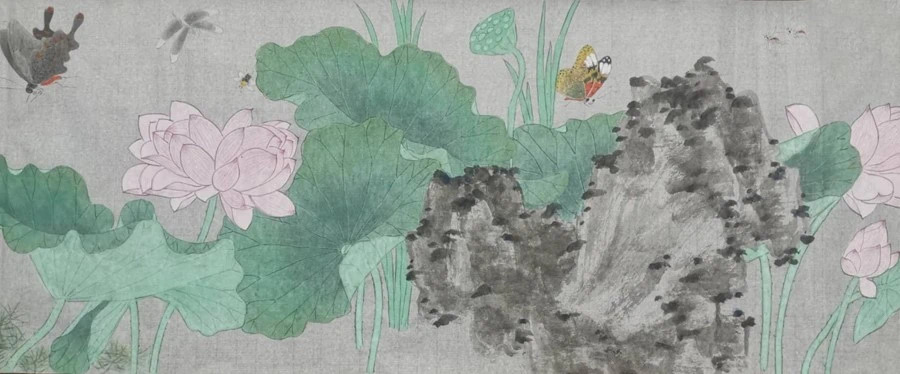
Xu Jianrong: There are two reasons, right. Firstly, older people have become experts, and as experts, they have their own opinions. There are both good and biased opinions, and of course, good ones are good. However, if it is prejudice, it is difficult for others to change, while young people are relatively "talkative", which can help me realize the writing ideas formed through decades of experience and lessons. Experts excel in academic research and artistic creation, expressing their own opinions. A dictionary cannot only write about what one knows. Secondly, today is the era of young people. I believe that my generation has been eliminated, and there are many new things, especially in the field of design and art. Young people know more, but we know less, and even have no knowledge at all. So, in order for an art dictionary to keep up with the times, it must rely mainly on young people as the main force of compilation.
Xu Jianrong and Students Together
Going to the study: This reminds me that you have been teaching and educating people for more than 30 years, cultivating many artists and scholars in the field of art history. What is the significance of young people learning art history?
Xu Jianrong: The waves behind the Yangtze River push the waves before. The development of art history is both an eternal transcendence and an eternal preservation. The purpose of art history is both constantly present and never achievable.
The history of Chinese art is an important component of our national cultural heritage and a visual crystallization of our great national wisdom. Studying art history helps us improve our ability to appreciate aesthetics, inspire national spirit, promote national traditions, and serve the construction of spiritual civilization in the new era.
I often remind young people not only to look back at China's history, but also to look forward to the world's history and today. From the macro background of broad cultural history, to "view the big and the small", the survival vitality of Chinese art history is transformed from the understanding of the past and the ancients into our current life interests and values, endowing the life mechanism of Chinese art history in world art history to contemporary history, and making Chinese art history a practical science.
Going to the study: Indeed, understanding art history is a source of cultural confidence, but where should we ultimately end up?

Xu Jianrong: The creative transformation and innovative development from the history of Chinese art is the responsibility entrusted to young people by the times. Young people can combine their expertise and interests to choose the aesthetic ideals and thoughts that best reflect the unique characteristics of the Chinese nation




